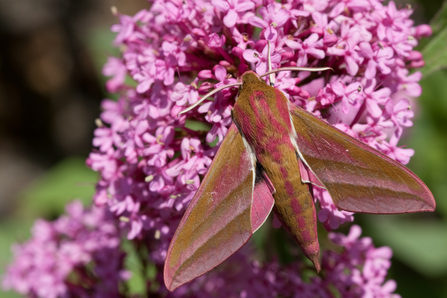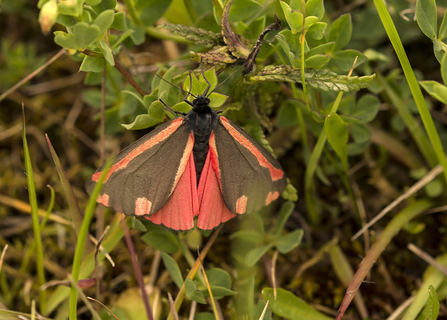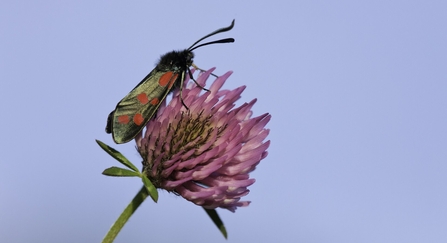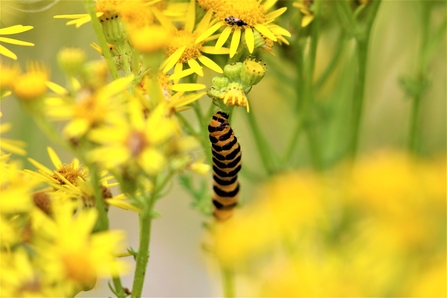There are over 2500 species of moths in the UK and each is incredibly unique in their appearance, habits, and life cycle. Here are just a few of these incredible species that can be found in London.

Elephant hawk moth
Photo credit: Vaughn Matthews
This is the elephant hawk moth with its striking golden-olive body, striped with pink it is commonly found in parks and gardens and is active at dusk. The caterpillars are very recognisable with two enormous black eyespots!

Garden tiger moth
Photo credit: Denis Jackson
Another species is the garden tiger moth which is well protected against any predators. The bright colours of this moth warn any potential attacker that it is not going to make a good meal, and the adult moths can rub their wings together to create a rasping noise to deter predators.

© Bob Coyle
A further example of these marvellous moths is the cinnabar moth whose spots again warn predators that it is poisonous. Feeding on ragwort flowers the cinnabar can only build up its supply of poison once it has eaten enough of this plant!
Moths are extremely valuable in helping us understand environmental changes because they are widespread, adaptable to various habitats, and highly sensitive to changes in their surroundings. By monitoring their numbers and distribution, we can gain essential insights into our environment's well-being, including the impact of new farming practices, pesticides, air pollution, and climate change.
Moths also help plants by pollinating flowers while collecting nectar, which aids in seed production. This not only benefits wild plants but also supports the growth of many of our food crops.

Six-spot burnet on red clover
Photo credit: Guy Edwardes/2020VISION
Moths are also integral to the food-chain serving as a food source for many predators, including birds, bats, spiders, and small mammals, for example even the smallest bats in the UK need to eat up to 3000 moths per night! They provide essential nutrients and energy for these animals, helping to sustain their populations.

Cinnabar moth caterpillar
Photo credit: Andrew Hankinson
Not only crucial for the environment, moths are also remarkably beautiful creatures! They have been the subject of study for centuries, and it's no surprise given their vast variety of sizes, textures, and colours. Even the same species of moth can have its own varied appearance!
The peppered moth is a brilliant example of moths adaptability in changing environments. In large cities during the industrial revolution, trees and rocks were black with soot when they once were covered in lichen. Hence the mottled peppered moth would be visible to any potential predators should they choose to land there. As a famous example of evolution in action, the peppered moths in cities are most commonly black, as a result of natural selection, whilst in more rural areas the mottled peppered moths dominate! Masters of disguise these moths have adapted incredibly to the changing environment.
Sadly moth numbers are in decline and they need to be protected, they face the same ecological threats as many other species such as habitat loss, climate change and the use of pesticides and garden management may have all contributed to this decrease in population.
Ensuring that we keep our green spaces moth friendly is a small way that we can help gives moths a chance to recover in numbers and ensures that moths can thrive.
Read more about actions you can take for moths
Female ghost moth
Photo credit: Vaughn Matthews
Moths are marvellous creatures as vital pollinators, decomposers, and a crucial food source for various predators, they contribute to maintaining ecological balance and supporting the diverse wildlife found in the urban and wider environment, So, next time you spot a marvellous moth fluttering by, remember to appreciate these incredible creatures for their vital role in keeping our environment blooming and buzzing with life!


